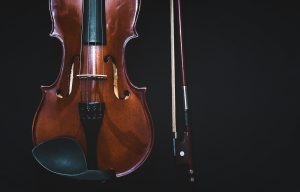
Before you try to choose a teacher, stop, take a big breath, allow yourself time to consider what you want in a teacher.
There are all kinds of people in the world and that includes teachers, parents and kids who are the potential recipients of the music lessons. A few of the questions you might ask yourself could include (and please be honest for your and your child’s sake! There are no right or wrong answers. You are you and that is who you are supposed to be. Just be as honest as you possibly can!):
- How much time each week am I willing to devote to helping my child with this project? The child probably needs help clearing out time as well as other details to meet the time demands of learning an instrument.
- Am I willing to sit through the lesson with the teacher and child and ask about what I don’t understand so that I can work with my child at home? This is important for the parent to think through so that he/she can then seek a teacher who is willing to work with parent and child or one who would rather have the child dropped off and picked up at the end of the lesson.
- Do I want my child to experience a caring teacher who has a plan of action and result-oriented goals around building technique on the instrument as well as fundamental music theory so that my child advances systematically and can handle Royal Conservatory of Music exams in Canada or in the American String Teachers Certificate Advancement exams in the US?
- Do I want my child to be able to understand and perform at the level of the Youth Orchestra he/she may join? Do I want a teacher who is willing to answer questions and help with specific orchestra playing needs?
- Would I rather have a teacher who is nice and fun no matter what happens at home or at the lesson and never places expectations on the child?
- Would I rather have my child do a little of all kinds of activities or stick with one or two things and get good at what they are doing? This question deserves a well thought out answer.
So far the ideas under discussion have been about parental attitudes. It’s time to give attention to the child’s ideas:
- Does this child enjoy music?
- Does he/she enjoy learning new activities, ideas, skills?
- Has he/she attended any concerts, orchestral, chamber music, church choir, youth orchestra or (good thought!) a student recital of a prospective teacher.
All of these experiences could help a youngster see himself/herself in these settings and come up with a meaningful reaction.
After considering these questions, you want to find a music teacher who is a match for your own preferences. Asking yourself these questions helps you get clear on what you want (and on what you and your child are motivated to do). Write down what is important for you and your child and go and meet with a few prospective teachers to ask meaningful questions and determine if you are a good match.
May you be blessed in your considerations and decisions!
Check out the related post on new students materials checklist.






![Photo by Nimajs (Own work) [CC BY-SA 3.0], via Wikimedia Commons](http://www.elainesviolinstudio.com/wp-content/uploads/2015/04/DrSuzuki.jpg)


